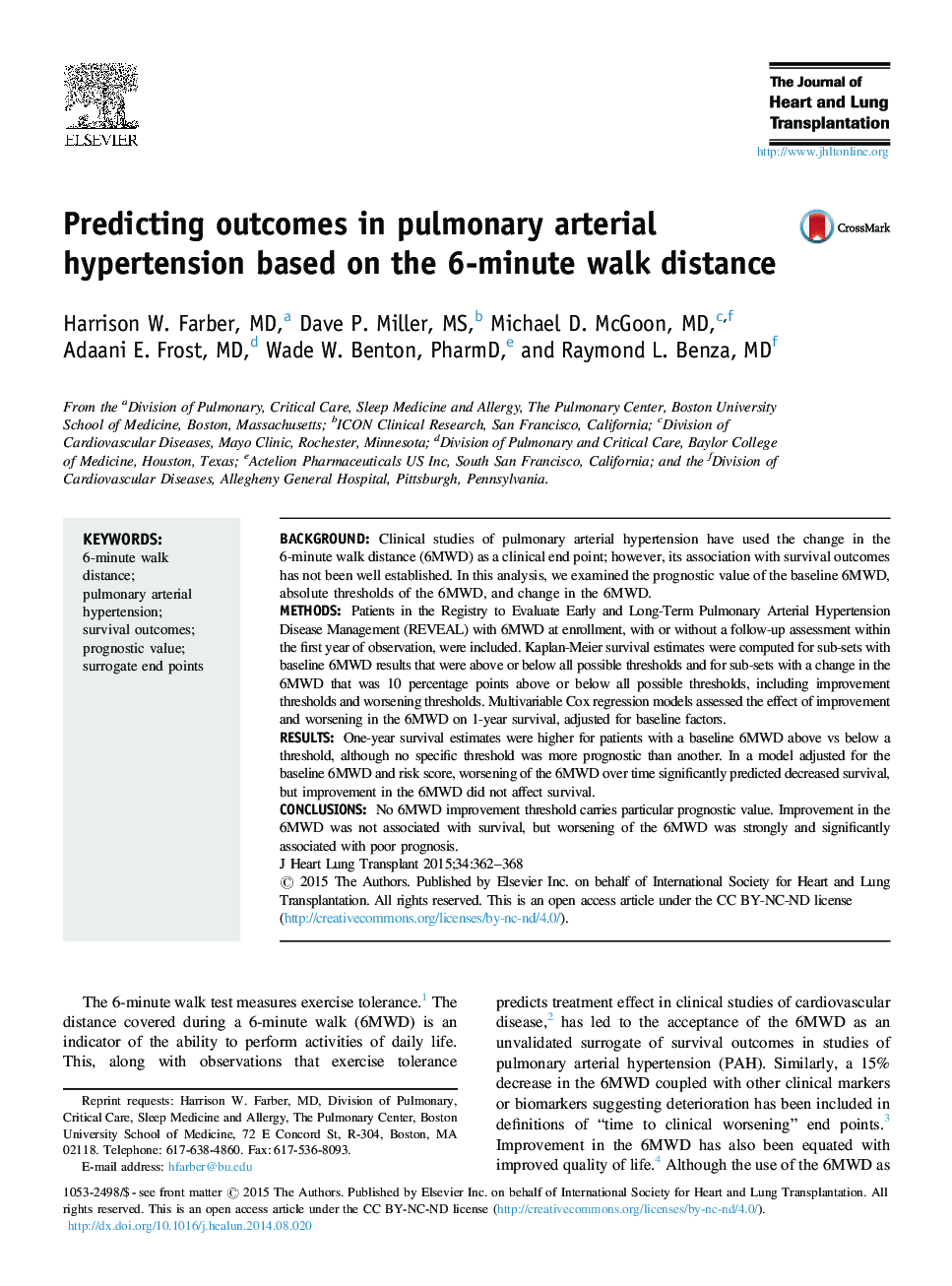| Article ID | Journal | Published Year | Pages | File Type |
|---|---|---|---|---|
| 5987267 | The Journal of Heart and Lung Transplantation | 2015 | 7 Pages |
BackgroundClinical studies of pulmonary arterial hypertension have used the change in the 6-minute walk distance (6MWD) as a clinical end point; however, its association with survival outcomes has not been well established. In this analysis, we examined the prognostic value of the baseline 6MWD, absolute thresholds of the 6MWD, and change in the 6MWD.MethodsPatients in the Registry to Evaluate Early and Long-Term Pulmonary Arterial Hypertension Disease Management (REVEAL) with 6MWD at enrollment, with or without a follow-up assessment within the first year of observation, were included. Kaplan-Meier survival estimates were computed for sub-sets with baseline 6MWD results that were above or below all possible thresholds and for sub-sets with a change in the 6MWD that was 10 percentage points above or below all possible thresholds, including improvement thresholds and worsening thresholds. Multivariable Cox regression models assessed the effect of improvement and worsening in the 6MWD on 1-year survival, adjusted for baseline factors.ResultsOne-year survival estimates were higher for patients with a baseline 6MWD above vs below a threshold, although no specific threshold was more prognostic than another. In a model adjusted for the baseline 6MWD and risk score, worsening of the 6MWD over time significantly predicted decreased survival, but improvement in the 6MWD did not affect survival.ConclusionsNo 6MWD improvement threshold carries particular prognostic value. Improvement in the 6MWD was not associated with survival, but worsening of the 6MWD was strongly and significantly associated with poor prognosis.
